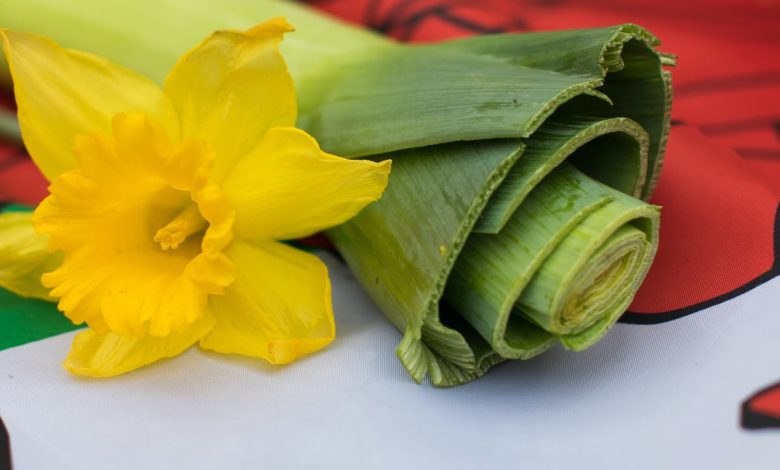How will you commemorate St David’s Day in 2022?

Celebrate St David’s life with UK time today and do the little things in life!
That’s right; today is St David’s Day 2022, and March 1 is commemorated as St David’s Day 2022. But who was St David, exactly? And why do we celebrate his birthday on March 1? – Stay tuned for further information on all of this and much more in the article. But first, we’d like to wish you a happy St David’s Day from all of us and our staff.
Are you planning on spending the day at home? If that’s the case, this guide is for you!
2022 is St David’s Day
St David, or Dewi Sant in Welsh, is the patron saint of Wales, commemorated on March 1 each year. The Welsh wear either of Wales’ national emblems – a leek or a daffodil – to celebrate and honour this day worldwide.
In normal circumstances, a bustling procession takes place in Cardiff’s centre, while villages and towns across the country hold their parades. Dragons and the Welsh national costume are familiar sights in these parades. With the restrictions in place, we’ll go over various ways you can safely commemorate this patron saint at home.
You can undertake a lot of St David’s Day activities in the comfort and safety of your own home, believe us. Let’s discover a little more about St David, the patron saint.
Read UK Updates for the latest news from the United Kingdom!
What is St David’s claim to fame?
Rhygyfarch, an 11th-century scholar, gathered and wrote almost all of the information we have about St David. According to his records, the Saint was born in Pembrokeshire in the year 500, the grandson of the King of Ceredigion. The Saint grew up to become a preacher, establishing monastic settlements and churches throughout Wales, England, and Brittany, notably the abbey at Glastonbury.
What did St David say before he died?
Be joyful, retain the faith, and do the simple things that you have heard and seen me do,” St David said in his final words to his followers before his death. This is why the expression “Gwenwch y pethau by chain mewn bywyd” – “Do the little things in life” – is still widely used among Welsh people.
In his lifetime, St David is claimed to have made a pilgrimage to Jerusalem. He became an archbishop and returned with a stone that eventually became a part of his ministry and is currently on display at St David’s Cathedral’s altar. St David was recognised for his religious zeal and austerity. Read further to learn more about St David’s Day activities and how to prepare your celebrations.
Read more about: – Manon Mccrory-lewis, Manon’s Lewis siblings
What is the tradition of commemorating St. David’s Day?
In Welsh, St David’s Day is commemorated by the greeting “Dydd Gyl Dewi Hapus.” Welsh people proudly wear their national symbol of a leek and a daffodil while enjoying traditional Welsh dances, singing and playing folk music, and indulging in some poetry as part of the St David’s day celebrations.
What do you usually wear on St. David’s Day?
In the 18th and 19th centuries, traditional Welsh clothing became a part of the culture. A dress and Welsh flannel cloak for women, topped with a tall hat and a frilly bonnet. Men wear a white shirt, a Welsh flannel waistcoat, long woollen socks, black trousers, and black shoes, while women wear a white shirt, a Welsh flannel waistcoat, long woollen stockings, black trousers, and black shoes.
Aside from traditional Welsh attire, a kilt outfit with ghillie shirts, kilt hose, sporrans, and pipe band accoutrements may be worn. Welsh dragon kilt pins, Welsh tartan socks, or an embroidered red dragon can be added to these things.
On St David’s Day, why are leeks and daffodils worn?
Daffodils are the first flowers to blossom in the spring, flowering in early March to coincide with the day. The Welsh word for leek is Cenhinen, which sounds uncannily like the Welsh word for daffodil, Cenhinen Pedr – which translates as Peter’s Leek.
In commemoration of the struggle against the Saxons, leeks are ornamented. St David led the battle, and the Welsh soldiers wore leeks pinned to their clothes to make them stand out against the enemies. The leek became a sign of pride, one of the Welsh national emblems after the Welsh won the fight. think and explore the best event and fashion blog.
On St David’s Day, what do you eat?
Our favourite aspect of St David’s Day is the food! While the Saint was said to be a vegetarian who only ate leeks from the fields, there are plenty of traditional St David’s Day meal ideas to try at home.
Cakes from Wales
Welsh Cakes, also known as ‘Pice ar y maen,’ are delicious delicacies consumed and loved regularly in Wales. Traditional cakes, or their variants, have been around since the nineteenth century. A sweet yet salty mix of a cookie, scone, and pancake. These cakes are light and fluffy while remaining moist and crumbly. Mouthwatering!
The lady of the house used to make these cakes as a treat to serve with afternoon tea, and they were also served to children with their school lunches.
Brith Bara
The Welsh version of the teacake is Speckles tea bread, also known as Bara Brith, traditionally baked with a yeast dough and dried fruit soaked in tea by bakers. The outcome is a delicious, moist loaf with remarkable shelf-stable properties. These teacakes come with a generous spread of soft cheese or Welsh butter.
Cawl
While the main ingredients change from year to year, the core remains the same. The Cawl is a good heartwarming, and heartening comfort dish. Cawl is a dish cooked with lamb or beef meat with seasonal vegetables such as leeks, swedes, potatoes, carrots, etc. All of this can be prepared in a single pot, eliminating the need for additional dishes – YAY!
Glamorgan Sausages are made in Glamorgan, Wales
Another traditional Welsh vegetarian sausage is the elegant Selsig Morgannwg or Glamorgan sausage. Caerphilly cheese and leeks are the main ingredients coated with golden breadcrumbs. While some variants contain pork, several Glamorgan sausage recipes are delicious and fully vegan.




